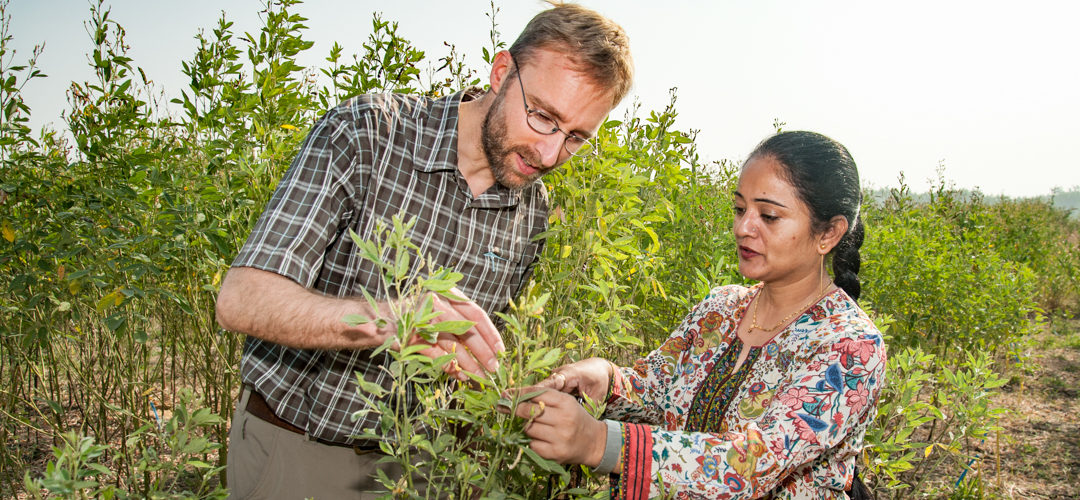Pigeonpea
Cajanus cajan
Pigeonpea is the sixth most important edible legume crop globally.
Pigeonpea (Cajanus cajan) is the sixth most important edible legume crop globally, with 5.9 million cultivated hectares. India, Myanmar, Malawi, Tanzania and Kenya are among the world’s top producers. Pigeonpea is found in both annual and perennial forms. It is used for both human nutrition and animal fodder. As with other legumes, it is sometimes used as green manure. Thanks to its tolerance to dry and hot conditions, it is an important crop in semi-arid conditions.
Pigeonpea originated from its wild progenitor (Cajanus cajanifolius) in central India 3500 BP. From there, it was spread to Malaysia, and East and West Africa. It arrived in the New World with the slave trade. Studies associating the genetic composition of pigeonpea with agronomic traits have provided insights to accelerate the production of more productive varieties.
Pigeonpea is found in both annual and perennial forms and can reach a height of 1–3 meters. Because it has deep roots, it is widely adapted and grows well in semi-arid areas. It has slender, pointed trifoliate leaves and yellow or yellow and red flowers.
Pigeonpea is often cross-pollinated by bees. The level of cross-pollination between plants ranges from 0–40%, depending on genotype and insect pollinator populations, and so care should be taken during regeneration to preserve the genetic integrity of accessions.
Wild Relatives
Pigeonpea (Cajanus cajan) is a member of the Fabaceae family and has many wild relatives. These include C. scarabaeoides, C. sericeus, C. acutifolius, C. albicans, Rhynchosia aurea, R. bracteata and Flemingia bracteata.
Collections
Major pigeonpea collections
Genesys lists information for about 14,500 pigeonpea accessions: 57% percent are landraces, 33% are breeding or research materials and 3% are wild relatives. The largest pigeonpea collection is conserved at the International Crop Research Institute for the Semi-Arid Tropics (ICARDA).

